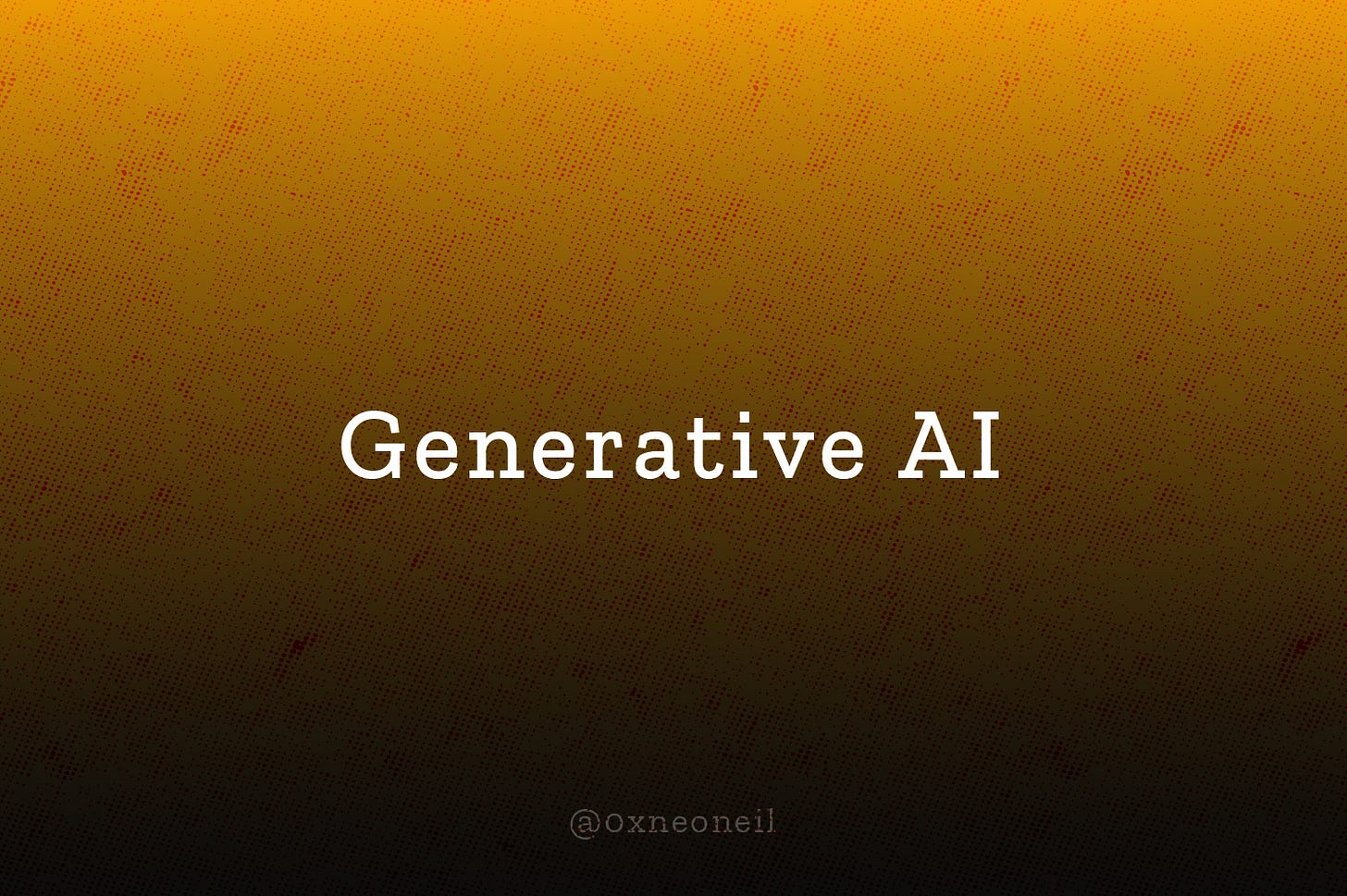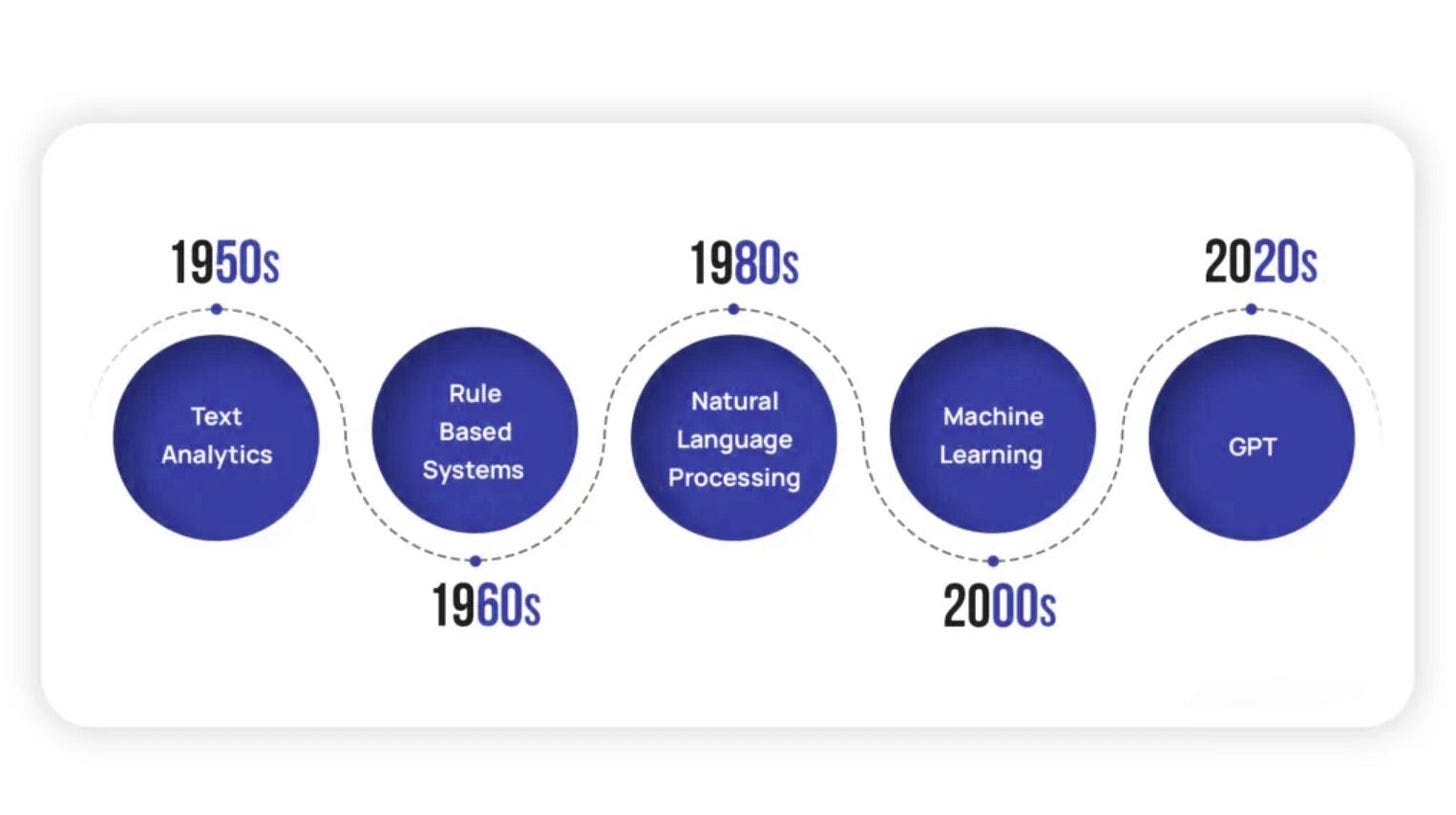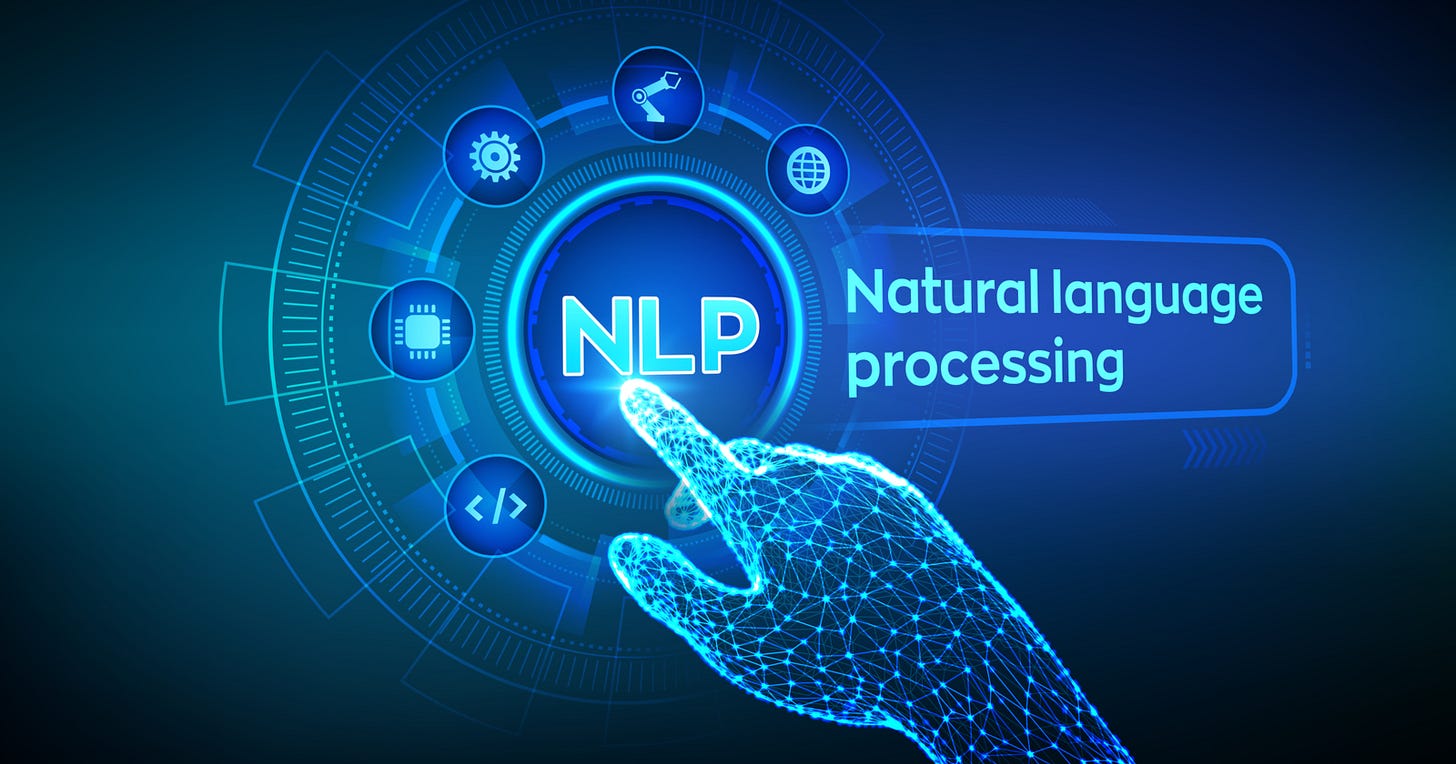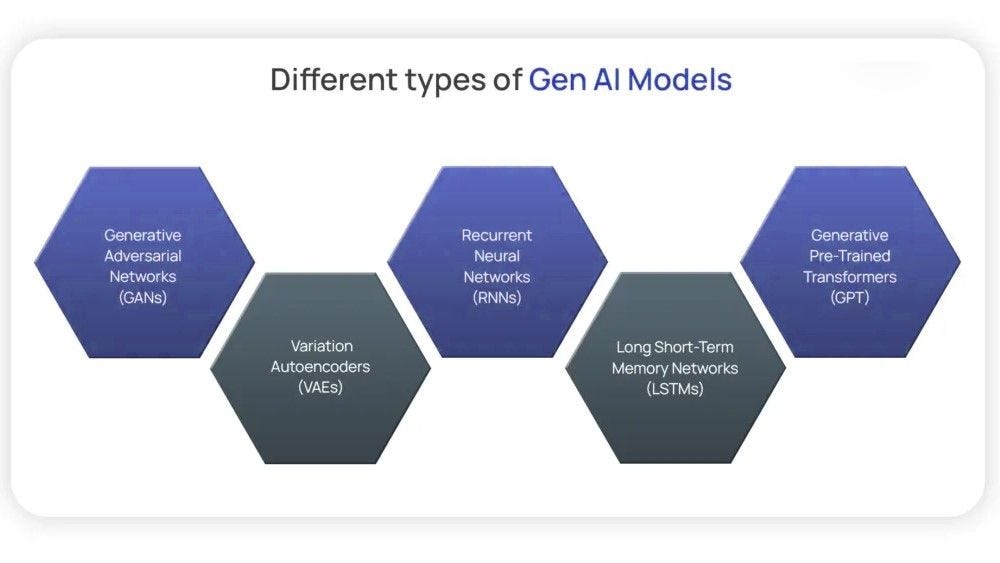Understanding Generative AI
Generative AI is an advanced technology with the capability to generate content in various forms such as text, speech, images, or even synthetic data.
Hello everyone!
I'm Neo— Admin — Community Manager of Optimus Finance and Growth Marketing of LECLE Vietnam.
We have briefly explored and gained a general overview of Artificial Intelligence (AI) in the previous article. In this article, we will delve deeper into Generative Artificial Intelligence (Generative AI).
Our world has undergone numerous periods of innovation and development up to the present day. The entire current world is undergoing a new cycle with digitization driven by Artificial Intelligence (AI). Digitization has permeated every aspect of businesses and individuals, from the Internet of Things (IoT) and Virtual Reality (VR) to Generative Artificial Intelligence (Generative AI) — the main focus of today's article.
In this article, I will delve deeper into Generative Artificial Intelligence (Generative AI), its untapped potential, and how to harness its capabilities for success in business. Let's get started!
1. What is Generative AI?
Generative AI is an advanced technology with the capability to generate content in various forms such as text, speech, images, or even synthetic data. It utilizes deep learning models and large language models (LLMs) to accomplish the task of creating new content.
"Its (Generative AI’s) performance will compete with the top 25 percent of people, completing any and all tasks before 2040" — McKinsey
Generative AI has become a global phenomenon. It undoubtedly extends beyond contextual discussions to encompass personalized suggestions, creative solutions, and much more. Its applications are widely distributed across various industries, from high-tech to agriculture and consumer packaging.
This is understandable as leading research organizations worldwide predict that Generative AI holds substantial untapped potential.
Gartner places Generative AI on the Peak of Inflated Expectations on the 2023 Hype Cycle for Emerging Technologies.
Deloitte estimates the market for Generative AI at $200B by 2032. This represents ~20% of total AI spend, up from ~5% today.
2. History of Generative AI
The term Generative AI may be a recent trend, but its history dates back at least 70 years when humans began to question whether machines could think and process like humans. Let's take a brief journey into the world of Artificial Intelligence through its formative years.
From humble beginnings in the 1950s with the advent of text analysis to the emergence of powerful language models like GPT (Generative Pre-trained Transformer), each era marks a significant step in our research to create machines that can understand and generate human language.
2.1. The 1950s: Text analysis - The Genesis of Artificial Intelligence (AI)
During the period from the 1950s to the early 1960s, the field of Artificial Intelligence (AI) was still in its infancy. Researchers were exploring the possibility of creating machines that could simulate human intelligence. One of the earliest efforts in this direction was text analysis. This era witnessed the development of primitive computer programs designed to process and analyze textual data.
The early text analysis systems primarily focused on simple tasks such as information retrieval and keyword extraction. The idea was to make computers capable of understanding and manipulating text in a manner similar to human comprehension. While these efforts marked significant progress for their time, they were limited in capability and lacked the sophistication we associate with AI today.
2.2. The 1960s: Rule-based systems and knowledge bases
In the late 1960s and throughout the 1970s, research in artificial intelligence shifted towards rule-based systems and knowledge bases. Researchers attempted to encode human expertise and knowledge into computer programs using explicit rules and logical reasoning. This approach led to the development of expert systems, capable of solving specific problems by adhering to predefined rules.
Expert systems marked a significant advancement in the field of artificial intelligence, demonstrating that computers could perform tasks that require human expertise. However, they were constrained by the need for manually crafting extensive rule sets and limited adaptability to new domains.
2.3. The 1980s: Natural Language Processing (NPL)
The 1980s and 1990s witnessed the emergence of Natural Language Processing (NLP), a crucial field in artificial intelligence aimed at enabling machines to understand and generate human language. Researchers began developing more advanced techniques for parsing and analyzing text, paving the way for applications such as machine translation, speech recognition, and sentiment analysis.
NLP systems still primarily relied on rules, utilizing grammatical and syntactic rules. These systems were capable of handling more complex language tasks than initial text analysis, but they still fell far short of human-level language understanding.
2.4. The 2000s: Machine learning revolution and Big data
This new transition marks a significant advancement in artificial intelligence research with the explosion of machine learning and the availability of vast amounts of digital data. Machine learning algorithms, especially neural networks, have proven highly effective in solving various artificial intelligence tasks, including those related to text and language.
This era gave rise to the concept of "Big Data" and the development of large-scale data analytics. With the advent of technologies like deep learning and the availability of massive datasets, artificial intelligence models became increasingly capable of understanding and generating human language.
2.5. The 2020s: GPT-3 and a significant leap in Generative AI
In the 2020s, the world witnessed the emergence of GPT-3 (Generative Pre-trained Transformer 3), a revolutionary artificial intelligence model, marking a significant milestone in the field of artificial intelligence and natural language processing. GPT-3 has been pre-trained on an extensive corpus of text data and can generate highly fluent and contextually relevant text.
The progress of GPT continues with the introduction of GPT-3.5, the model used by ChatGPT, and GPT-4, the latest version in the GPT series.
3. What are Large Language Models (LLM)?
It would be incomplete to discuss without understanding Large Language Models (LLMs).
Large Language Models are a type of language model trained using deep learning techniques on massive text datasets. These models have the ability to generate text that closely resembles human language and perform various natural language processing tasks.
Large Language Models are trained on large, unlabeled datasets with a massive number of parameters. GPT-3, for instance, is trained with 175 billion parameters.
Unlabeled datasets can be open-source, such as Wikipedia pages, or private, like internally curated training documents, depending on the needs. The entire functionality of LLMs revolves around the probability distributions of words or sequences of words combined to form a sentence or phrase.
LLMs can predict the next word that might appear in a sentence.
The prediction of the next word is based on a specific "validity" and this validity doesn't necessarily have to be determined by grammatical rules. Instead, it is determined by the factor of how creatively humans construct language. Learning to some extent to mimic how humans write language is a result of training language on large datasets (big data).
Some popular Large Language Models (LLMs) include:
GPT 3, 3.5 and 4 of Open AI
LaMDA and PaLM of Google
BLOOM of Hugging Face
LLaMA of Meta
NeMO LLM of NVidia
In this list, Meta's LLaMA is an open-source LLM that developers worldwide use to create personalized models.
LLMs and Generative AI are related concepts, but they have significant differences in their goals, capabilities and applications.
Let's delve a bit deeper to understand more about the key Generative AI models that are currently in use today.
4. Understanding Generative AI Models and their types
Generative AI models are a subset of artificial intelligence (AI) models designed to create new data that resembles or follows patterns found in existing data. Generative AI models differ from other AI models that focus on classification, prediction, or reinforcement learning.
Here are some important characteristics and types of Generative AI models:
Generating Data: Generative AI models have the ability to create new content that mimics patterns or styles observed in the training data. This content can take various forms, including text, images, music, and more.
Unsupervised Learning: Many Generative AI models employ unsupervised learning techniques, where the model learns patterns and structures in the data without explicit labels or clear objectives. This enables them to generate data without specific examples of what to generate.
Variability: Generative models are often characterized by the ability to produce diverse outputs. For example, they can generate different styles of art, rephrase a piece of text in various ways, or create multiple versions of an image.
Now, let's explore some types of Generative AI models.
4.1. Generative Adversarial Networks - GANs
Generative Adversarial Networks - GANs consist of two neural networks, a generator, and a discriminator, in a competitive relationship. The generator produces data, while the discriminator evaluates the authenticity of that data. This adversarial process leads to the generator improving its ability to create realistic data. GANs have been widely used for generating images, style transfer, and content creation.
4.2. Variational Autoencoders - VAEs
Variational Autoencoders - VAEs là các mô hình sinh hoạt động dựa trên nguyên tắc của mô hình hóa xác suất. Chúng nhằm mục đích học phân phối xác suất cơ bản của dữ liệu. VAEs thường được sử dụng để tạo ra hình ảnh, nén dữ liệu và khôi phục hình ảnh.
Variational Autoencoders - VAEs are generative models based on the principles of probabilistic modeling. They aim to learn the underlying probability distribution of the data. VAEs are often used for generating images, data compression, and image reconstruction.
4.3. Recurrent Neural Networks - RNNs
Recurrent Neural Networks - RNNs are a type of neural network architecture designed specifically for sequential data, such as text and time-series data. They are used for text generation, machine translation, and speech recognition. However, traditional RNNs have a drawback in capturing long-term dependencies.
4.4. Long Short-Term Memory - LSTM
Long Short-Term Memory - LSTMs are a special type of RNN capable of capturing long-term dependencies in sequential data. They have proven effective in natural language processing tasks, including language modeling, text generation, and sentiment analysis.
4.5. Generative Pre-trained Transformers - GPT
GPT models are a recent breakthrough in Generative AI. These models leverage the transformer architecture and large-scale pre-training on text data to generate fluent and contextually relevant text. They excel in various natural language understanding and generation tasks, including chatbot applications, content creation, translation, and many other applications.
5. What are the prominent applications of Generative AI?
The impact of Generative AI is limitless, revolutionizing industries and individuals everywhere. From enhancing content creation to improving personal education, healthcare, customer service, and marketing.
We will categorize them into 2 different groups so you can explore the applications of Generative AI by industry and their functions.
* Applications by Industries
5.1. Marketing, Advertising, and Entertainment Industry
Content creation: Generative AI serves as a catalyst for content creation across various forms such as art, music, literature, and more. Artists and musicians leverage artificial intelligence to generate new works and explore innovative creative directions.
Video game development: AI-powered systems drive the development of gaming environments, characters, and even dialogues, reducing the time and resources required for game development.
Scriptwriting: Scriptwriters and content creators harness Generative AI to support scriptwriting by generating dialogues, plotlines, and interactions between characters.
5.2. Education Industry
Personalized learning: Generative AI shapes educational content according to the individual needs of students by generating tailored exercises, quizzes, and study materials, enhancing a customized learning experience.
Knowledge base: Generative AI can be employed to create a comprehensive knowledge base that students can use to access information instantly through conversational interfaces.
Virtual laboratories: Generative AI powers virtual laboratories, simulating experiments and situations for students to explore scientific research, engineering, and other practical fields of study.
5.3. Healthcare Industry
Medical image generation: Generative AI is employed to produce synthetic medical images for training machine learning models, enhancing diagnostic accuracy and simulating rare medical conditions for educational purposes.
Drug discovery: Pharmaceutical companies use Generative AI to explore new drug compounds by generating molecular structures, accelerating the drug development process.
Personalized medicine: Generative AI models analyze patient data to generate personalized treatment plans, taking into account genetic factors, medical history, and current health conditions.
5.4. Manufacturing Industry
Product Design: Utilizing Generative AI algorithms to generate optimal product designs, considering factors such as materials, weight, and structural properties, optimizing the product development process.
Quality control: Generative AI models generate synthetic data for quality control tests, ensuring that manufacturing processes adhere to quality standards.
Supply chain optimization: AI-generated demand forecasts and supply chain scenarios assist manufacturers in making informed decisions regarding production and distribution.
5.5. Software & Tech Industry
Code generation: Generative AI can assist developers by generating code snippets and templates for common programming tasks, helping to expedite the development process.
Bug Detection: AI-powered tools can generate test cases and synthetic scenarios to aid in identifying and efficiently fixing software bugs.
IT Security: Generative AI models can simulate network attack scenarios to help IT departments identify vulnerabilities and enhance cybersecurity measures.
* Application by functions
5.6. Customer service
Chatbots and virtual assistants: Generative AI creates intelligent chatbots and virtual assistants capable of handling customer requests, providing information, and resolving issues 24/7.
Sentiment analysis: Status analysis reports generated by Generative AI help customer service teams understand customer sentiment and feedback, enabling more robust and effective responses.
Automatic request routing: Generative AI algorithms assist in automatically routing customer requests to the appropriate department or staff, optimizing response time and issue resolution.
5.7. Marketing
Content creation: Generative AI assists marketers in creating high-quality and engaging content, including blog posts, social media updates, and advertising copies.
Personalization: Generative AI algorithms use customer data to generate personalized marketing campaigns, adjusting content and suggestions for each individual customer.
A/B Testing: Generative AI can propose A/B testing ideas, helping marketers refine their strategies by predicting which variants will yield the best results.
5.8. Human Resources
Automated profile filtering: Generative AI enhances the speed of profile filtering by categorizing profiles based on various parameters such as qualifications, education, skills, ...
Personal learning path: Generative AI customizes employee development plans by generating personalized training proposals and facilitating automatic evaluations, ...
Virtual HR assistant: A Chatbot equipped with Generative AI can share information about policies with employees, aiding in the smooth onboarding process for new personnel, ...
5.9. Sales
Prospecting potential customers: Generative AI analyzes customer profiles to determine potential and generates target lists for the sales team by categorizing them into priority groups.
Sales content: Generative AI assists in creating sales materials such as presentations, sales emails, and product pitch presentations to enhance the sales process.
Price optimization: Generative AI models can propose pricing strategies and generate price quotes based on market dynamics and customer data.
5.10. Operations and purchase
Maintenance planning: Generative AI assists in predicting maintenance needs for equipment, optimizing maintenance schedules, and minimizing downtime.
Supplier selection: Generative AI analyzes supplier data and market trends to propose suitable suppliers, helping the procurement department make informed decisions with up-to-date information.
Negotiation with Suppliers: Generative AI provides negotiation strategies, supporting procurement experts in achieving more favorable terms and prices.
6. Limitations of Generative AI
"Generative AI is like a glorified tape-recorder. It takes snippets of what’s on the web created by a human, splices them together and passes it off as if it created these things. And people are saying, ‘Oh my God, it’s a human, it’s humanlike." - Michio Kaku, Renowned Theoretical Physicist and Futurist
One of the major concerns people have today is, "Will ChatGPT replace my job?" It can be said that this concern is not entirely justified, as Generative AI lacks consciousness up to this point.
Devices with consciousness remain a dream for the future. Amidst this excitement, it is important to distinguish between the fascination and the reality of this groundbreaking technology. Let's understand the limitations of Generative AI from a practical perspective.
6.1. Understanding context
Generative AI faces challenges in grasping context, leading to sometimes nonsensical or unrelated responses in natural language processing tasks.
6.2. True creativity
Although it can mimic creative styles, Generative AI lacks true creativity, imagination, and emotional depth. It relies on models and data rather than genuine sources of inspiration.
6.3. Hallucinations
Generative AI tends to fall into a phenomenon known as hallucination. The hallucination of Generative AI generates distorted content based on its understanding of a situation or context.
6.4. Bias and Fairness
Generative AI models may inadvertently perpetuate existing biases in their training data, resulting in outputs that reflect societal prejudices.
7. The future of Generative AI
The story of Generative AI is far from over as it continues to learn and evolve. Its future holds significant potential, reshaping how we interact with technology and addressing complex issues. Maintaining a balance between harnessing its potential and confronting challenges is crucial.
Generative AI may impact three key areas in the future:
7.1. Creating regular content at a high speed
While Generative AI has limitations in achieving true creativity, it can generate various forms of content across multiple topics at a high speed and large scale. This can be leveraged across various industries, functions, and personas to advance organizational goals.
7.2. Natural and transparent conversation
Virtual assistants and chatbots will increasingly have the ability to handle complex questions, provide personalized suggestions, and engage in emotionally intelligent conversations. They will play a crucial role in customer service, healthcare, and education.
7.3. Large-scale personalization
Generative AI will enable detailed personalization across various industries. AI systems will analyze vast amounts of data to provide personalized experiences and recommendations.
Personalized campaigns, content, and product suggestions will become prevalent, enhancing user satisfaction and interaction.
8. Closing thoughts
The emergence of Generative AI projects will bring promising applications into our lives. From daily tasks to critical domains, Generative AI has the potential to make significant changes.
However, to fully harness the potential of Generative AI, we also need to consider and address challenges, including ethical concerns, information security issues, and ensure that this technology is used transparently and fairly.
Most importantly, we need to understand that the role of humans remains crucial, and the collaboration between machines and humans will shape the future positively.
What about your thoughts? If you want to know further about it, don’t hesitate to share it with us! 😀
This post is for educational purposes only. All materials I used were the different reference sources. Hope you like and follow us and feel free to reach out to us if there is an exchange of information. Cheers! 🍻
#AI #GenerativeAI #LLM #Bigdata













